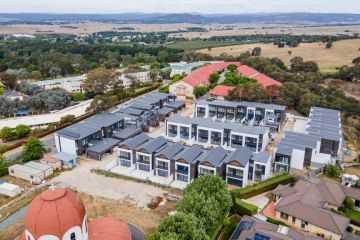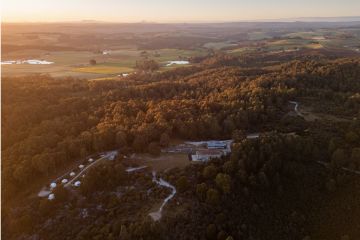‘It’s going to get worse’: Larger rental crisis looms as vacancies hit record lows

Tenants are facing the toughest rental market ever in Australia with rental vacancy rates falling to another low in October, new data shows.
The market, already in crisis across the country, is expected to worsen as the new academic year begins in a few months, experts say.
In October, the national vacancy rate nearly halved compared with a year earlier, falling from 1.5 per cent in October 2021, to 0.8 per cent last month, Domain’s latest rental vacancy rate report revealed.
In Sydney, it fell to a record 1 per cent, while Melbourne dropped to a record 1.1 per cent. A balanced market is considered to be about 3 per cent.
Domain chief of research and economics Dr Nicola Powell said conditions were worsening.
“There is a rental crisis across the country, and it’s going to get more serious,” Powell said.
Conditions were difficult for renters applying for properties and could worsen as the 2023 school year begins and as international migrants and students return in bigger numbers, she said.
More housing was needed to cater for overseas migrants, as was more social and affordable housing for those most in need, she said.
“If you are on a low income in Australia, you would find it extremely difficult to find an affordable rental right now,” Powell said.
Sydney recorded its fourth consecutive monthly vacancy rate fall and the number of available rentals dropped by 53 per cent due, in part, to investors selling to owner-occupiers.

Vacancy rates are now well below the peak of 3.8 per cent recorded in 2020 at the height of the pandemic, when international borders were closed to stop the spread of COVID-19.
It has pushed Sydney rents higher – house rents soared by 4.8 per cent or $30 per week to a $650 median in the September quarter, Domain data showed.
It was a similar story in Melbourne, where house rents rose by 2.2 per cent in three months to a weekly median of $470.
At 1.1 per cent, Melbourne’s vacancy rate equalled a low first set in 2018 – well down on the highs of 5.2 per cent in 2020.

Brisbane’s vacancy rate was still tight, though it rose slightly to 0.7 per cent, while Perth’s rate fell to a record 0.3 per cent and Adelaide recorded the tightest rental market among the capital cities with 0.2 per cent.
Real Estate Institute of Australia president Hayden Groves said property managers were reporting that some prospective tenants were making up to 50 applications for a home.
Some were giving up as it had become too difficult to find a rental after so many applications.
“It is a very challenging time for tenants and the industry acknowledges that,” Groves said.

Landlords valued tenants who were paying rent on time and looking after their rentals well, he said, adding they would be in a good position to negotiate a smaller rise in rents.
Tenants’ Union of NSW chief executive Leo Patterson Ross said renters were making up to 100 applications for a home unsuccessfully, sometimes after receiving a no-grounds eviction with a set end date.
“It pushes people into quite unsafe environments,” Patterson Ross said. “They have to compromise on location but also on the quality and the size, and that can mean people are placing themselves in harm’s way in order to keep a roof over their head because there just aren’t the options available to them.
“This is really a very risky way to run an essential service.”
Some tenants who can afford a property are only being turned away because another applicant is more attractive in a competitive system.
Existing tenants may be less likely to ask for repairs if they risk getting a no-grounds eviction and facing the “Hunger Games of finding a new home”, he said.
With Elizabeth Redman
We recommend
We thought you might like
States
Capital Cities
Capital Cities - Rentals
Popular Areas
Allhomes
More
- © 2025, CoStar Group Inc.










